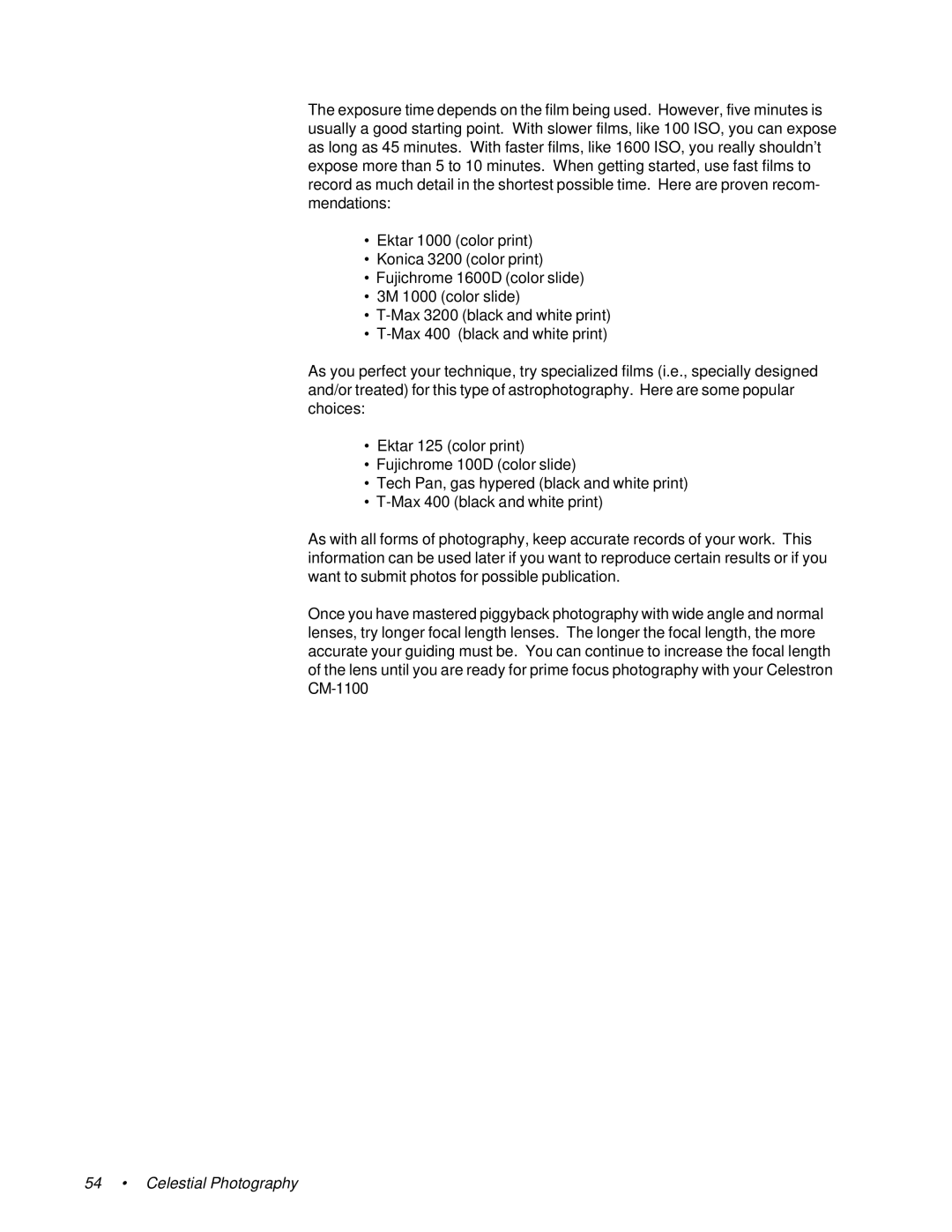The exposure time depends on the film being used. However, five minutes is usually a good starting point. With slower films, like 100 ISO, you can expose as long as 45 minutes. With faster films, like 1600 ISO, you really shouldn’t expose more than 5 to 10 minutes. When getting started, use fast films to record as much detail in the shortest possible time. Here are proven recom- mendations:
•Ektar 1000 (color print)
•Konica 3200 (color print)
•Fujichrome 1600D (color slide)
•3M 1000 (color slide)
•
•
As you perfect your technique, try specialized films (i.e., specially designed and/or treated) for this type of astrophotography. Here are some popular choices:
•Ektar 125 (color print)
•Fujichrome 100D (color slide)
•Tech Pan, gas hypered (black and white print)
•
As with all forms of photography, keep accurate records of your work. This information can be used later if you want to reproduce certain results or if you want to submit photos for possible publication.
Once you have mastered piggyback photography with wide angle and normal lenses, try longer focal length lenses. The longer the focal length, the more accurate your guiding must be. You can continue to increase the focal length of the lens until you are ready for prime focus photography with your Celestron
